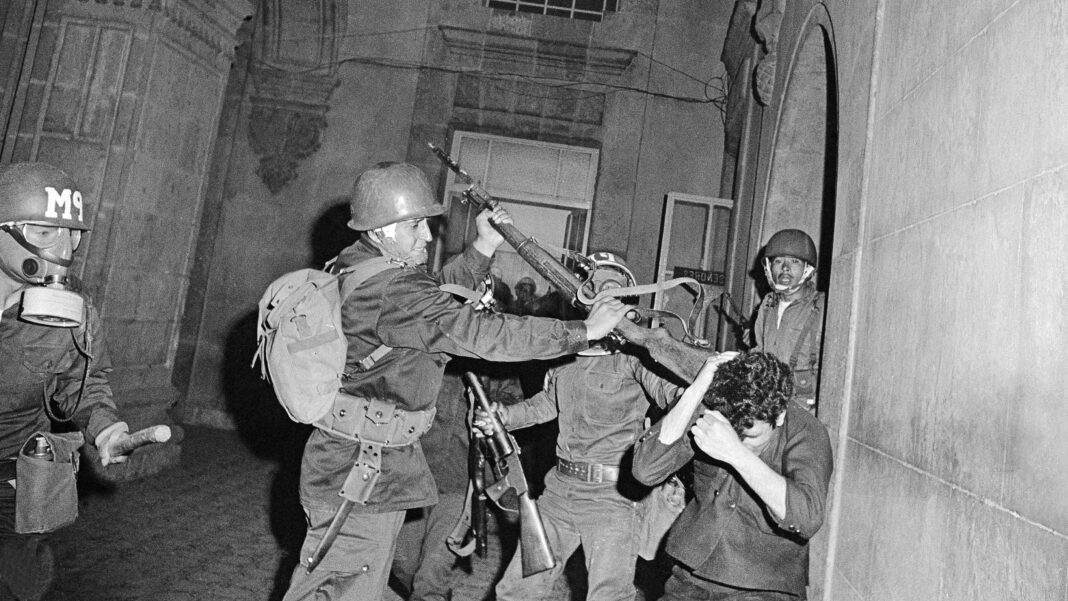BTN News: A new and significant chapter in Mexico’s history has been revealed with the recent publication of a comprehensive report on the so-called “Dirty War,” a period of intense state repression from 1965 to 1990. The Mecanismo de Esclarecimiento Histórico (MEH), part of a broader commission investigating the state’s counterinsurgency apparatus, has released nearly 5,000 pages of findings that aim to reshape public understanding of this dark period. The report paints a chilling picture of a multifaceted state apparatus that extended its reach far beyond political dissidents, targeting anyone who threatened the regime’s vision of order and development. This included not only guerrilla fighters, but also campesinos, students, workers, journalists, LGBTQ+ individuals, and even religious minorities. The findings present new insights into previously unknown massacres, the use of death flights, and the widespread human rights violations that occurred under the guise of maintaining national security. The report serves as a crucial reminder that the repressive mechanisms of the past continue to cast a long shadow over contemporary Mexico, with patterns of violence and impunity persisting to this day.
For decades, the true extent of the Mexican government’s repressive tactics during the latter half of the 20th century remained obscured, silenced by fear and political interests. However, the recent publication of the MEH report seeks to change that narrative by offering a comprehensive examination of the state’s counterinsurgency efforts, revealing a far-reaching campaign of violence and control that targeted not just political dissent but any form of social disruption. The report highlights the state’s use of brutal force to suppress a wide range of groups, from indigenous communities resisting displacement to journalists exposing corruption, and even religious devotees who strayed from the official Catholic doctrine. This systematic repression, carried out by a range of state actors including police, military, and local government officials, resulted in widespread human rights abuses, including torture, forced disappearances, and extrajudicial killings.
One of the most shocking revelations in the report is the documentation of 46 previously unknown massacres, resulting in at least 385 deaths, and the use of death flights, a gruesome method of disposing of bodies by throwing them into the sea from aircraft. These practices, previously associated primarily with Argentina’s Dirty War, have now been confirmed as part of Mexico’s own dark history. The report also uncovers new evidence of death flights in regions like Chiapas, where they were used to suppress indigenous communities resisting the construction of a hydroelectric plant. The MEH report builds on previous efforts to investigate the Dirty War, including those undertaken by the administration of President Vicente Fox in the early 2000s. However, unlike past attempts that focused primarily on political dissidents, this report offers a more expansive view of state repression, encompassing a broader range of victims and abuses.
The release of this report comes at a critical time, as Mexico continues to grapple with the legacy of its violent past and the ongoing challenges of impunity and corruption. The report underscores the continuity of repressive practices, noting that the same institutions responsible for past atrocities remain largely intact, with many of the same patterns of violence persisting into the present. The MEH report identifies 8,593 victims of severe human rights violations, including torture, forced disappearances, and extrajudicial killings. This number is likely to increase with the forthcoming publication of additional findings by Eugenia Allier, one of the MEH commissioners, who has focused her investigation on the persecution of political dissidents, including guerrilla fighters, students, and union leaders.
The MEH’s findings present a daunting challenge for the current Mexican government, which must decide how to integrate this new information into its official narrative and what steps to take in response. The commission’s work is part of a broader effort to achieve truth and justice for the victims of the Dirty War, an effort that has been fraught with difficulties and setbacks. Previous attempts to hold perpetrators accountable, such as the creation of a special prosecutor’s office during the Fox administration, yielded few results, with most cases stalling in the courts or being dismissed altogether. The MEH report calls on the Mexican government, particularly the Fiscalía General de la República (FGR), to take up these cases and pursue justice for the victims.
One of the report’s key recommendations is for the FGR to investigate the death flights, massacres, and other human rights violations documented in the report. The MEH has provided the FGR with extensive evidence, including names of perpetrators and detailed accounts of the crimes, which could form the basis for new prosecutions. The report also emphasizes the need for institutional reform, arguing that the same state institutions responsible for past atrocities remain largely unreformed and continue to operate with impunity. This continuity of repression, the report suggests, is a major factor in the ongoing violence and human rights abuses in Mexico today.
As Mexico prepares to confront the legacy of its Dirty War, the MEH report serves as a stark reminder of the human cost of state repression and the urgent need for truth, justice, and accountability. The report’s findings are a powerful indictment of the Mexican state’s actions during this dark period, revealing a campaign of terror that targeted not just political dissidents but anyone who posed a threat to the regime’s vision of order and development. The challenge now is for the Mexican government to take meaningful action in response to these revelations, ensuring that the victims of the Dirty War finally receive the justice they deserve.


